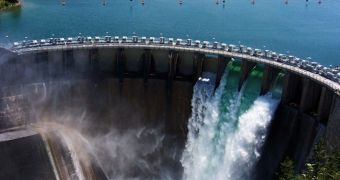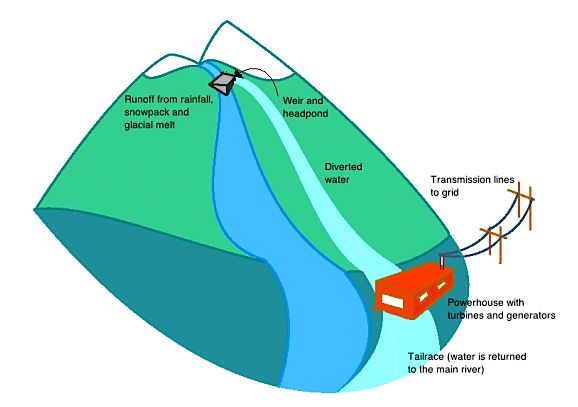If specialists working with Tocardo International BV, i.e. a Dutch turbine maker, are right, then run-of-river hydropower has high chances to be worth a $1.4 billion (approximately €1 billion) in about 10 years' time.
This will probably happen due to the urgency to limit climate change and global warming by curbing greenhouse gas emissions, and also because, when compared to more conventional means to harvest hydropower, run-of-river technology is a tad more eco-friendly.
As detailed in the diagram available at the end of this article, run-of-river hydropower boils down to toying with a watercourse in such ways that part of its flow ends up visiting a powerhouse fitted with turbines and generators.
Once this diverted flow of water does its job to set turbines in motion and help generate clean electricity, it is allowed to return to its source, specialists explain.
“Run-of-river is actually a diversion strategy that redirects part of a downward-flowing waterway through a pipe down the head (elevation change) to spin turbines and generate electricity at a lower powerhouse,” Hans van Breugel with Tocardo International BV details.
“From the powerhouse, the water then rejoins its source. Upstream storage (pondage) is minimal and used only on a daily or weekly basis,” Hans van Bruegel, the General Director of the Dutch turbine maker adds, as cited by Clean Technica.
What makes run-of-river hydropower so appealing is the fact that, when compared to more traditional methods to harvest this clean energy source, this technology does not require that a lot of money be invested in building infrastructure. What's more, run-of-river hydro projects are easy to implement.
“The advantages of river-turbine projects are you don’t need to build infrastructure, they’re easy to install and maintain, and they can be easily connected to the local grid. Within a year you can start installing these projects, whereas hydropower projects can take 12 to 15 years,” Hans van Breugel explains.
Needless to say, run-of-river hydropower projects are less likely to affect wildlife, simply because no major chances need be made to existing natural ecosystems in order to implement them. Besides, such projects cause little to no environmental pollution and emit virtually no greenhouse gas emissions.
According to the folks at Tocardo International BV, run-of-river hydropower projects are especially well suited for remote and mountainous regions. In facts, the Dutch turbine maker claims that several such initiatives have until now been successfully implemented in areas across the Pacific Northwest and Himalayan Asia.

 14 DAY TRIAL //
14 DAY TRIAL // 

